fuzzy techniques for image segmentation
Bạn đang xem bản rút gọn của tài liệu. Xem và tải ngay bản đầy đủ của tài liệu tại đây (1.2 MB, 14 trang )
F
uzzy
Techniques for
Image
Segmentation
L
´aszl´o G. Ny´ul
Outline
Fuzzy systems
Fuzzy sets
Fuzzy image
processing
Fuzzy
connectedness
F
uzzy Techniques for Image Segmentation
L´aszl´o G. Ny´ul
Department of Image Processing and Computer Graphics
University of Szege d
2008-07-12
F
uzzy
Techniques for
Image
Segmentation
L
´aszl´o G. Ny´ul
Outline
Fuzzy systems
Fuzzy sets
Fuzzy image
processing
Fuzzy
connectedness
Ou
tline
1 F
uzzy systems
2 F
uzzy sets
3 F
uzzy image processing
F
uzzy thresholding
F
uzzy clustering
4 F
uzzy connectedness
Th
eory
Algo
rithm
V
ariants
Ap
plications
F
uzzy
Techniques for
Image
Segmentation
L
´aszl´o G. Ny´ul
Outline
Fuzzy systems
Fuzzy sets
Fuzzy image
processing
Fuzzy
connectedness
Deal
ing with imperfections
Ao
ccdrnig to a rscheearch at Cmabrigde Uinervtisy, it deosn’t
mttaer in waht oredr the ltteers in a wrod are, the olny
iprmoetnt tihng is taht the frist and lsat ltteer be at the rghit
pclae. The rset can b e a toatl mses and you can sitll raed it
wouthit porbelm. Tihs is bcuseae the huamn mnid deos not
raed ervey lteter by istle f, but the wrod as a wlohe.
According to a researcher (sic) at Cambridge University, it
doesn’t matter in what order the letters in a word are, the only
important thing is that the first and last letter be at the right
place. The rest can be a total mess and you can still read it
without problem. This is because the human mind does not
read every letter by itse lf but the word as a whole.
F
uzzy
Techniques for
Image
Segmentation
L
´aszl´o G. Ny´ul
Outline
Fuzzy systems
Fuzzy sets
Fuzzy image
processing
Fuzzy
connectedness
F
uzzy systems
•
F
uzzy systems and models are capable of repre senting
diverse, inexact, and inaccurate information
•
Fuzzy logic provides a method to formalize reasoning when
dealing with vague terms. Not every decision is either true
or false. Fuzzy logic allows for membership functions, or
degrees of truthfulness and falsehoods.
F
uzzy
Techniques for
Image
Segmentation
L
´aszl´o G. Ny´ul
Outline
Fuzzy systems
Fuzzy sets
Fuzzy image
processing
Fuzzy
connectedness
Memb
ership function examples
“y
oung person” “cold beer”
F
uzzy
Techniques for
Image
Segmentation
L
´aszl´o G. Ny´ul
Outline
Fuzzy systems
Fuzzy sets
Fuzzy image
processing
Fuzzy
connectedness
App
lication area for fuzzy systems
•
Quality control
•
Error diagnostics
•
Control theory
•
Pattern recognition
F
uzzy
Techniques for
Image
Segmentation
L
´aszl´o G. Ny´ul
Outline
Fuzzy systems
Fuzzy sets
Fuzzy image
processing
Fuzzy
connectedness
Ob
ject characteristics in images
Gra
ded composition
heterogeneity of intensity in the
object region due to heterogeneity
of object material and blurring
caused by the imaging device
Hanging-togetherness
natural grouping of voxels
constituting an object a human
viewer readily sees in a display of
the scene as a Gestalt in spite of
intensity heterogeneity
F
uzzy
Techniques for
Image
Segmentation
L
´aszl´o G. Ny´ul
Outline
Fuzzy systems
Fuzzy sets
Fuzzy image
processing
Fuzzy
connectedness
F
uzzy set
Let X be the universal set.
For (sub)set A of X
µ
A
(x) =
1 if x ∈ A
0 if x ∈ A
For crisp sets µ
A
is called the characteristic function of A.
A fuz
zy subset A of X is
A = {(x, µ
A
(x)) | x ∈ X }
where µ
A
is the membership function of A in X
µ
A
: X → [0, 1]
F
uzzy
Techniques for
Image
Segmentation
L
´aszl´o G. Ny´ul
Outline
Fuzzy systems
Fuzzy sets
Fuzzy image
processing
Fuzzy
connectedness
Pr
obability vs.
grade of membership
Probablility
•
is concerned with occurence of events
•
represent uncertainty
•
probability density functions
Compute the probability that an ill-known variable x of the
universal set U falls in the well-known set A.
Fuzzy sets
•
deal with graduality of concepts
•
represent vagueness
•
fuzzy membership functions
Compute for a well-known variable x of the universal set U to
what degree it is member of the ill-known set A.
F
uzzy
Techniques for
Image
Segmentation
L
´aszl´o G. Ny´ul
Outline
Fuzzy systems
Fuzzy sets
Fuzzy image
processing
Fuzzy
connectedness
Pr
obability vs.
grade of membership
Examples
•
Th
is car is between 10 and 15 years old (pure imprecision)
•
This car is very big (imprecision & vagueness)
•
This car was probably made in Germany (uncertainty)
•
The image will probably become very dark (uncertainty &
vagueness)
F
uzzy
Techniques for
Image
Segmentation
L
´aszl´o G. Ny´ul
Outline
Fuzzy systems
Fuzzy sets
Fuzzy image
processing
Fuzzy
connectedness
F
uzzy membership functions
tria
ngle trapezoid
gau
ssian singleton
F
uzzy
Techniques for
Image
Segmentation
L
´aszl´o G. Ny´ul
Outline
Fuzzy systems
Fuzzy sets
Fuzzy image
processing
Fuzzy
connectedness
F
uzzy set properties
He
ight
height(A) = sup {µ
A
(x) | x ∈ X }
Normal fuzzy set
height(A) = 1
Sub-normal fuzzy set
height(A) = 1
Support
supp(A) = {x ∈ X | µ
A
(x) > 0}
Core
core(A) = {x ∈ X | µ
A
(x) = 1}
Cardinality
A =
x∈X
µ
A
(x)
F
uzzy
Techniques for
Image
Segmentation
L
´aszl´o G. Ny´ul
Outline
Fuzzy systems
Fuzzy sets
Fuzzy image
processing
Fuzzy
connectedness
Op
erations on fuzzy sets
Intersection
A ∩ B = {(x, µ
A∩B
(x)) | x ∈ X } µ
A∩B
= min(µ
A
, µ
B
)
Union
A ∪ B = {(x, µ
A∪B
(x)) | x ∈ X } µ
A∪B
= max(µ
A
, µ
B
)
Complement
¯
A = {(x, µ
¯
A
(x)) | x ∈ X } µ
¯
A
= 1 − µ
A
Note: For crisp sets A ∩
¯
A = ∅. The same is often NOT true
for fuzzy sets.
F
uzzy
Techniques for
Image
Segmentation
L
´aszl´o G. Ny´ul
Outline
Fuzzy systems
Fuzzy sets
Fuzzy image
processing
Fuzzy
connectedness
F
uzzy relation
A fuzzy relation ρ in X is
ρ = {((x, y ), µ
ρ
(x, y)) | x, y ∈ X }
with a membership function
µ
ρ
: X × X → [0, 1]
F
uzzy
Techniques for
Image
Segmentation
L
´aszl´o G. Ny´ul
Outline
Fuzzy systems
Fuzzy sets
Fuzzy image
processing
Fuzzy
connectedness
Pr
operties of fuzzy relations
ρ is reflexive if
∀x ∈ X µ
ρ
(x, x) = 1
ρ is symmetric if
∀x, y ∈ X µ
ρ
(x, y) = µ
ρ
(y, x)
ρ is transitive if
∀x, z ∈ X µ
ρ
(x, z) =
y∈X
µ
ρ
(x, y) ∩ µ
ρ
(y, z)
ρ is similitude if it is reflexive, symmetric, and transitive
Note: this corresponds to the equivalence relation in hard sets.
F
uzzy
Techniques for
Image
Segmentation
L
´aszl´o G. Ny´ul
Outline
Fuzzy systems
Fuzzy sets
Fuzzy image
processing
Fuzzy
thresholding
Fuzzy clustering
F
uzzy
connectedness
Fuzzy image processing
“Fuzzy image processing is the collection of all approaches that
understand, represent and process the images, their segm ents
and features as fuzzy sets. The representation and processing
depend on the selected fuzzy technique and on the problem to
be solved.”
(From: Tizhoosh, Fuzzy Image Processing, Springer, 1997)
“ a pictorial object is a fuzzy set which is specified by some
membership function defined on all picture points. From this
point of view, each image point participates in many
memberships. Some of this uncertainty is due to degradation,
but some of it is inherent In fuzzy set terminology, making
figure/ground distinctions is equivalent to transforming from
membership functions to characteristic functions.”
(1970, J.M.B. Prewitt)
F
uzzy
Techniques for
Image
Segmentation
L
´aszl´o G. Ny´ul
Outline
Fuzzy systems
Fuzzy sets
Fuzzy image
processing
Fuzzy
thresholding
F
uzzy clustering
Fuzzy
connectedness
Fuzzy image processing
F
uzzy
Techniques for
Image
Segmentation
L
´aszl´o G. Ny´ul
Outline
Fuzzy systems
Fuzzy sets
Fuzzy image
processing
Fuzzy
thresholding
Fuzzy clustering
Fuzzy
connectedness
F
uzzy thresholding
g(x) =
0 if f (x) < T
1
µ
g(x)
if T
1
≤ f (x) < T
2
1 if T
2
≤ f (x) < T
3
µ
g(x)
if T
3
≤ f (x) < T
4
0 if T
4
≤ f (x)
F
uzzy
Techniques for
Image
Segmentation
L
´aszl´o G. Ny´ul
Outline
Fuzzy systems
Fuzzy sets
Fuzzy image
processing
Fuzzy
thresholding
F
uzzy clustering
Fuzzy
connectedness
Fuzzy thresholding
Example
o
riginal CT slice volume rendered image
F
uzzy
Techniques for
Image
Segmentation
L
´aszl´o G. Ny´ul
Outline
Fuzzy systems
Fuzzy sets
Fuzzy image
processing
Fuzzy
thresholding
Fuzzy clustering
F
uzzy
connectedness
Fuzziness and threshold selection
o
riginal image Otsu fuzziness
F
uzzy
Techniques for
Image
Segmentation
L
´aszl´o G. Ny´ul
Outline
Fuzzy systems
Fuzzy sets
Fuzzy image
processing
Fuzzy
thresholding
F
uzzy clustering
Fuzzy
connectedness
k-nearest neighbors (kNN)
•
T
raining: Identify (label) two sets of voxels X
O
in object
region and X
NO
in background
•
Labeling: For each voxel v in input scenes . . .
•
Find its location P in feature space
•
Find k voxels close st to P from sets X
O
and X
NO
•
If a majority of those are from X
O
, then label v as object,
otherwise as background
•
F
uzzification: If m of the k nearest neighbor of v be longs
to object, then assign µ(v) =
m
k
to v as
membership
F
uzzy
Techniques for
Image
Segmentation
L
´aszl´o G. Ny´ul
Outline
Fuzzy systems
Fuzzy sets
Fuzzy image
processing
Fuzzy
thresholding
Fuzzy clustering
Fuzzy
connectedness
k-m
eans clustering
The k-means algorithm iteratively optimizes an objective
function in order to detect its minima by starting from a
reasonable initialization.
•
The objective function is
J =
k
j=1
n
i=1
x
(j)
i
− c
j
2
F
uzzy
Techniques for
Image
Segmentation
L
´aszl´o G. Ny´ul
Outline
Fuzzy systems
Fuzzy sets
Fuzzy image
processing
Fuzzy
thresholding
F
uzzy clustering
Fuzzy
connectedness
k-means clustering
Algorithm
1 Consid
er a set of n data points (feature vectors) to be
clustered.
2 Assume
the number of clusters, or classes, k, is known.
2 ≤ k < n.
3 Ra
ndomly select k initial cluster center locations.
4 All
data points are assigned to a partition, defined by the
nearest cluster ce nter.
5 Th
e cluster centers are moved to the geometric centroid
(center of mass) of the data points in their respective
partitions.
6 Rep
eat from (4) until the objective function is smaller
than a given tolerance, or the centers do not m ove to a
new point.
F
uzzy
Techniques for
Image
Segmentation
L
´aszl´o G. Ny´ul
Outline
Fuzzy systems
Fuzzy sets
Fuzzy image
processing
Fuzzy
thresholding
Fuzzy clustering
F
uzzy
connectedness
k-means clustering
Issues
•
How to initialize?
•
What objective function to use?
•
What distance to use?
•
Robustness?
•
What if k is not known?
F
uzzy
Techniques for
Image
Segmentation
L
´aszl´o G. Ny´ul
Outline
Fuzzy systems
Fuzzy sets
Fuzzy image
processing
Fuzzy
thresholding
F
uzzy clustering
Fuzzy
connectedness
Fuzzy c -means clustering
•
A
partition of the observed set is represented by a c × n
matrix U = [u
ik
], where u
ik
corresponds to the
membership value of the k
th
element (of n), to the i
th
cluster (of c clusters).
•
Each
element may belong to more than one cluster but its
“overall” membership equals one.
•
The objective function includes a parameter m controlling
the degree of fuzziness.
•
The objective function is
J =
c
j=1
n
i=1
(u
ij
)
m
x
(j)
i
− c
j
2
F
uzzy
Techniques for
Image
Segmentation
L
´aszl´o G. Ny´ul
Outline
Fuzzy systems
Fuzzy sets
Fuzzy image
processing
Fuzzy
thresholding
Fuzzy clustering
Fuzzy
connectedness
F
uzzy c-means clustering
Algorithm
1 Consid
er a set of n data points to be clustered, x
i
.
2 Assume
the number of clusters (classes) c, is known. 2 ≤ c < n.
3 Cho
ose an appropriate level of cluster fuzziness, m ∈ R
>1
.
4 In
itialize the (n × c) sized membership matrix U to random
values s uch that u
ij
∈ [0, 1] and
c
j=1
u
ij
= 1.
5 Ca
lculate the cluster centers c
j
using c
j
=
n
i=1
(u
ij
)
m
x
i
n
i=1
(u
ij
)
m
,
for
j = 1 . . . c.
6 Ca
lculate the distance measures d
ij
=
x
(j)
i
− c
j
, for all clusters
j = 1 . . . c and data points i = 1 . . . n.
7 Up
date the fuzzy membership matrix U according to d
ij
. If
d
ij
> 0 then u
ij
=
c
k=1
d
ij
d
ik
2
m−1
−1
.
If d
ij
= 0 then the data
point x
j
coincides with the cluster center c
j
, and so full
membership can be set u
ij
= 1.
8 Rep
eat from (5) until the change in U is less than a given
tolerance.
F
uzzy
Techniques for
Image
Segmentation
L
´aszl´o G. Ny´ul
Outline
Fuzzy systems
Fuzzy sets
Fuzzy image
processing
Fuzzy
thresholding
F
uzzy clustering
Fuzzy
connectedness
Fuzzy c -means clustering
Issues
•
Computationally expensive
•
Highly
dependent on the initial choice of U
•
If data-specific experimental values are not available,
m = 2 is the usual choice
•
Extensions exist that simultaneously estimate the intensity
inhomogeneity bias field while producing the fuzzy
partitioning
F
uzzy
Techniques for
Image
Segmentation
L
´aszl´o G. Ny´ul
Outline
Fuzzy systems
Fuzzy sets
Fuzzy image
processing
Fuzzy
connectedness
Theory
Algorithm
Variants
Applications
Basic idea of fuzzy connectedness
•
lo
cal hanging-togetherness
(affinity) based on similarity
in spatial location as well as
in intensity(-derived features)
•
global hanging-togetherness
(connectedness)
F
uzzy
Techniques for
Image
Segmentation
L
´aszl´o G. Ny´ul
Outline
Fuzzy systems
Fuzzy sets
Fuzzy image
processing
Fuzzy
connectedness
Theory
Al
gorithm
Variants
Applications
F
uzzy digital space
F
uzzy spel adjacency is a reflexive and symmetric fuzzy
relation α in Z
n
and assigns a value to a pair of spels (c, d)
based on how close they are spatially.
Example
µ
α
(c, d) =
1
c − d
if c − d < a
small distance
0 otherwise
F
uzzy digital space
(Z
n
, α)
Scene (over a fuzzy digital space)
C = (C, f ) where C ⊂ Z
n
and f : C → [L, H]
F
uzzy
Techniques for
Image
Segmentation
L
´aszl´o G. Ny´ul
Outline
Fuzzy systems
Fuzzy sets
Fuzzy image
processing
Fuzzy
connectedness
Theory
Algorithm
Variants
Applications
Fuzzy spel affinity
Fuzzy spel affinity is a reflexive and symmetric fuzzy relation
κ in Z
n
and assigns a value to a pair of spels (c, d) based on
how close they are spatially and intensity-based-property-wise
(local hanging-togetherness).
µ
κ
(c, d) = h(µ
α
(c, d), f (c), f (d), c, d)
Examp
le
µ
κ
(c, d) = µ
α
(c, d) (w
1
G
1
(f (c) + f (d)) + w
2
G
2
(f (c) − f (d)))
where G
j
(x) = exp
−
1
2
(x − m
j
)
2
σ
2
j
F
uzzy
Techniques for
Image
Segmentation
L
´aszl´o G. Ny´ul
Outline
Fuzzy systems
Fuzzy sets
Fuzzy image
processing
Fuzzy
connectedness
Theory
Al
gorithm
Variants
Appli
cations
Paths between spels
A path p
cd
in C from spel c ∈ C to spel d ∈ C is any sequence
c
1
, c
2
, . . . , c
m
of m ≥ 2 spels in C, where c
1
= c and c
m
= d.
Let P
cd
denote the set of all possible paths p
cd
from c to d.
Then the set of all possible paths in C is
P
C
=
c,d∈C
P
cd
F
uzzy
Techniques for
Image
Segmentation
L
´aszl´o G. Ny´ul
Outline
Fuzzy systems
Fuzzy sets
Fuzzy image
processing
Fuzzy
connectedness
Theory
Algorithm
Variants
Applications
Strength of connectedness
The fuz
zy κ-net N
κ
of C is a fuzzy subset of P
C
, where the
membership (strength of connectedness) assigned to any
path p
cd
∈ P
cd
is the smallest spel affinity along p
cd
µ
N
κ
(p
cd
) = min
j=1, ,m−1
µ
κ
(c
j
, c
j+1
)
The fuz
zy κ-connectedness in C (K ) is a fuzzy relation in C
and assigns a value to a pair of spels (c, d) that is the
maximum of the strengths of connectedness assigned to all
possible paths from c to d (global hanging-togetherness).
µ
K
(c, d) = max
p
cd
∈P
cd
µ
N
κ
(p
cd
)
F
uzzy
Techniques for
Image
Segmentation
L
´aszl´o G. Ny´ul
Outline
Fuzzy systems
Fuzzy sets
Fuzzy image
processing
Fuzzy
connectedness
Theory
Al
gorithm
Variants
Applications
F
uzzy κ
θ
component
Let θ ∈ [0, 1] be a given threshold
Let K
θ
be the following binary (equivalence) relation in C
µ
K
θ
(c, d) =
1 if µ
κ
(c, d) ≥ θ
0 otherwise
Let O
θ
(o) be the equivalence class of K
θ
that contains o ∈ C
Let Ω
θ
(o) be defined over the fuzzy κ-connectedness K as
Ω
θ
(o) = {c ∈ C | µ
K
(o, c) ≥ θ}
Pra
ctical computation of FC relies on t he following equivalence
O
θ
(o) = Ω
θ
(o)
F
uzzy
Techniques for
Image
Segmentation
L
´aszl´o G. Ny´ul
Outline
Fuzzy systems
Fuzzy sets
Fuzzy image
processing
Fuzzy
connectedness
Theory
Algorithm
Variants
Applications
Fuzzy connected object
Th
e fuzzy κ
θ
object O
θ
(o) of C containing o is
µ
O
θ
(o)
(c) =
η(c) if c ∈ O
θ
(o)
0 otherwise
that is
µ
O
θ
(o)
(c) =
η(c) if c ∈ Ω
θ
(o)
0 otherwise
where η assigns an objectness value to each spel p e rhaps based
on f (c) and µ
K
(o, c).
F
uzzy connected objects are robust to the s ele ction of se eds.
F
uzzy
Techniques for
Image
Segmentation
L
´aszl´o G. Ny´ul
Outline
Fuzzy systems
Fuzzy sets
Fuzzy image
processing
Fuzzy
connectedness
Theory
Al
gorithm
Variants
Appli
cations
Fuzzy connectedness as
a graph search problem
•
Spels → graph nodes
•
Spel faces → graph edges
•
Fuzzy spel-affinity relation → edge costs
•
Fuzzy connectedness → all-pairs shortest-path problem
•
Fuzzy connected objects → connected components
F
uzzy
Techniques for
Image
Segmentation
L
´aszl´o G. Ny´ul
Outline
Fuzzy systems
Fuzzy sets
Fuzzy image
processing
Fuzzy
connectedness
Theory
Algorithm
Variants
Applications
Computing fuzzy connectedness
Dynamic programming
Algo
rithm
Input: C, o ∈ C, κ
Ou
tput: A K-connectivity scene C
o
= (C
o
, f
o
) of C
Auxiliary data: a queue Q of spels
begin
set all elements of C
o
to 0 except o which is set to 1
push all spels c ∈ C
o
such that µ
κ
(o, c) > 0 to Q
while Q = ∅ do
remove a spel c from Q
f
val
← max
d∈C
o
[min(f
o
(d), µ
κ
(c, d))]
if f
val
> f
o
(c) then
f
o
(c) ← f
val
push all spels e such that µ
κ
(c, e) > 0 f
val
> f
o
(e) f
val
> f
o
(e) and µ
κ
(c, e) > f
o
(e)
endif
endwhile
end
F
uzzy
Techniques for
Image
Segmentation
L
´aszl´o G. Ny´ul
Outline
Fuzzy systems
Fuzzy sets
Fuzzy image
processing
Fuzzy
connectedness
Theory
Al
gorithm
Variants
Applications
Co
mputing fuzzy connectedness
Dijkstra’s-like
Algo
rithm
Input: C, o ∈ C, κ
Output: A K-connectivity scene C
o
= (C
o
, f
o
) of C
Auxiliary data: a priority queue Q of spels
begin
set all elements of C
o
to 0 except o which is set to 1
push o to Q
while Q = ∅ do
remove a spel c from Q for which f
o
(c) is maximal
for each spel e such that µ
κ
(c, e) > 0 do
f
val
← min(f
o
(c), µ
κ
(c, e))
if f
val
> f
o
(e) then
f
o
(e) ← f
val
update e in Q (or push if not yet in)
endif
endfor
endwhile
end
F
uzzy
Techniques for
Image
Segmentation
L
´aszl´o G. Ny´ul
Outline
Fuzzy systems
Fuzzy sets
Fuzzy image
processing
Fuzzy
connectedness
Theory
Algorithm
Variants
Applications
Brain tissue segmentation
FSE
F
uzzy
Techniques for
Image
Segmentation
L
´aszl´o G. Ny´ul
Outline
Fuzzy systems
Fuzzy sets
Fuzzy image
processing
Fuzzy
connectedness
Theory
Al
gorithm
Variants
Appli
cations
FC with threshold
MRI
F
uzzy
Techniques for
Image
Segmentation
L
´aszl´o G. Ny´ul
Outline
Fuzzy systems
Fuzzy sets
Fuzzy image
processing
Fuzzy
connectedness
Theory
Algorithm
Variants
Applications
FC with threshold
CT and MRA
F
uzzy
Techniques for
Image
Segmentation
L
´aszl´o G. Ny´ul
Outline
Fuzzy systems
Fuzzy sets
Fuzzy image
processing
Fuzzy
connectedness
Theory
Al
gorithm
Variants
Applications
F
uzzy connectedness variants
•
Multiple seeds per object
•
Scale-based fuzzy affinity
•
Vectorial fuzzy affinity
•
Absolute fuzzy connectedness
•
Relative fuzzy connectedness
•
Iterative relative fuzzy connectedness
F
uzzy
Techniques for
Image
Segmentation
L
´aszl´o G. Ny´ul
Outline
Fuzzy systems
Fuzzy sets
Fuzzy image
processing
Fuzzy
connectedness
Theory
Algorithm
Variants
Applications
Scale-based affinity
Consid
ers the following aspects
•
spatial adjacency
•
homogeneity (local and global)
•
object feature (expected intensity properties)
•
obj
ect scale
F
uzzy
Techniques for
Image
Segmentation
L
´aszl´o G. Ny´ul
Outline
Fuzzy systems
Fuzzy sets
Fuzzy image
processing
Fuzzy
connectedness
Theory
Al
gorithm
Variants
Appli
cations
Object scale
Object scale in C at any spel c ∈ C is the radius r(c) of the
largest hyperball centered at c which lies entirely within the
same object region
Th
e scale value can be simply and effectively estimated without
explicit object segmentation
F
uzzy
Techniques for
Image
Segmentation
L
´aszl´o G. Ny´ul
Outline
Fuzzy systems
Fuzzy sets
Fuzzy image
processing
Fuzzy
connectedness
Theory
Algorithm
Variants
Applications
Computing object scale
Algo
rithm
Input: C, c ∈ C , W
ψ
, τ ∈ [0, 1]
Ou
tput: r (c)
begin
k ← 1
while FO
k
(c) ≥ τ do
k ← k + 1
endwhile
r(c) ← k
end
F
raction of the ball boundary homogeneous with the center spel
FO
k
(c) =
d∈B
k
(c)
W
ψ
s
(|f (c) − f (d)|)
|B
k
(c) − B
k−1
(c)|
F
uzzy
Techniques for
Image
Segmentation
L
´aszl´o G. Ny´ul
Outline
Fuzzy systems
Fuzzy sets
Fuzzy image
processing
Fuzzy
connectedness
Theory
Al
gorithm
Variants
Applications
Rel
ative fuzzy connectedness
•
al
ways at least two objects
•
automatic/adaptive thresholds
on the object boundaries
•
objects (object seeds) “compete”
for spels and the one with
stronger connectedness wins
F
uzzy
Techniques for
Image
Segmentation
L
´aszl´o G. Ny´ul
Outline
Fuzzy systems
Fuzzy sets
Fuzzy image
processing
Fuzzy
connectedness
Theory
Algorithm
Variants
Applications
Relative fuzzy connectedness
Algorithm
Let O
1
, O
2
, . . . , O
m
, a given set of objects (m ≥ 2),
S = {o
1
, o
2
. . . , o
m
} a set of corresponding seeds, and let
b(o
j
) = S \ {o
j
} denote the ‘background’ seeds w.r.t. seed o
j
.
1 define
affinity for each object ⇒ κ
1
, κ
2
, . . . , κ
m
2 com
bine them into a single affinity ⇒ κ =
j
κ
j
3 com
pute fuzzy connectedness using κ ⇒ K
4 dete
rmine the fuzzy connected objects ⇒
O
ob
(o) = {c ∈ C | ∀o
∈ b(o) µ
K
(o, c) > µ
K
(o
, c)}
µ
O
ob
(c) =
η(c) if c ∈ O
ob
(o)
0 otherwise
F
uzzy
Techniques for
Image
Segmentation
L
´aszl´o G. Ny´ul
Outline
Fuzzy systems
Fuzzy sets
Fuzzy image
processing
Fuzzy
connectedness
Theory
Al
gorithm
Variants
Appli
cations
kNN vs. VSRFC
F
uzzy
Techniques for
Image
Segmentation
L
´aszl´o G. Ny´ul
Outline
Fuzzy systems
Fuzzy sets
Fuzzy image
processing
Fuzzy
connectedness
Theory
Algorithm
Variants
Applications
Image segmentation using FC
•
MR
•
brain tissue, tumor, MS lesion segmentation
•
MRA
•
vessel segme ntation and artery-vein separation
•
CT bone segmentation
•
kin
ematics studies
•
measuring bone density
•
stress-and-strain m odeling
•
CT soft tissue segmentation
•
cancer, c yst, polyp detection and quantification
•
stenosis and aneurism detection and quantification
•
Digitized mammography
•
detecting microcalcifications
•
Craniofacial 3D imaging
•
visualization and surgical planning
F
uzzy
Techniques for
Image
Segmentation
L
´aszl´o G. Ny´ul
Outline
Fuzzy systems
Fuzzy sets
Fuzzy image
processing
Fuzzy
connectedness
Theory
Al
gorithm
Variants
Applications
Pr
otocols for brain MRI
F
uzzy
Techniques for
Image
Segmentation
L
´aszl´o G. Ny´ul
Outline
Fuzzy systems
Fuzzy sets
Fuzzy image
processing
Fuzzy
connectedness
Theory
Algorithm
Variants
Applications
FC segmentation of brain tissues
1 Co
rrect for RF field inhomogeneity
2 Sta
ndardize MR image intensities
3 Compute
fuzzy affinity for GM, WM, CSF
4 Sp
ecify seeds and VOI (interaction)
5 Compute
relative FC for GM, WM, CSF
6 Create
brain intracranial mask
7 Co
rrect brain mask (interaction)
8 Create
masks for FC objects
9 De
tect potential lesion sites
10 Compute
relative FC for GM, WM, CSF, LS
11 V
erify the segmented lesions (interaction)
F
uzzy
Techniques for
Image
Segmentation
L
´aszl´o G. Ny´ul
Outline
Fuzzy systems
Fuzzy sets
Fuzzy image
processing
Fuzzy
connectedness
Theory
Al
gorithm
Variants
Appli
cations
Brain tissue segmentation
SPGR
F
uzzy
Techniques for
Image
Segmentation
L
´aszl´o G. Ny´ul
Outline
Fuzzy systems
Fuzzy sets
Fuzzy image
processing
Fuzzy
connectedness
Theory
Algorithm
Variants
Applications
MS lesion quantification
FSE
F
uzzy
Techniques for
Image
Segmentation
L
´aszl´o G. Ny´ul
Outline
Fuzzy systems
Fuzzy sets
Fuzzy image
processing
Fuzzy
connectedness
Theory
Al
gorithm
Variants
Applications
Bra
in tumor quantification
F
uzzy
Techniques for
Image
Segmentation
L
´aszl´o G. Ny´ul
Outline
Fuzzy systems
Fuzzy sets
Fuzzy image
processing
Fuzzy
connectedness
Theory
Algorithm
Variants
Applications
Skull object from CT
F
uzzy
Techniques for
Image
Segmentation
L
´aszl´o G. Ny´ul
Outline
Fuzzy systems
Fuzzy sets
Fuzzy image
processing
Fuzzy
connectedness
Theory
Al
gorithm
Variants
Appli
cations
MRA slice and MIP rendering
F
uzzy
Techniques for
Image
Segmentation
L
´aszl´o G. Ny´ul
Outline
Fuzzy systems
Fuzzy sets
Fuzzy image
processing
Fuzzy
connectedness
Theory
Algorithm
Variants
Applications
MRA vessel segmentation and
artery/vein separation
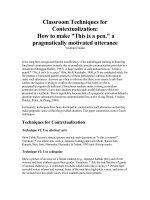
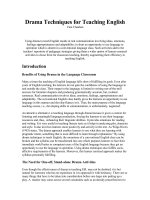
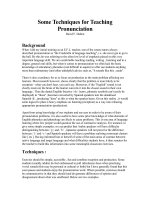




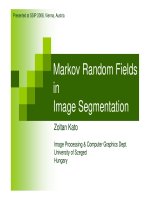
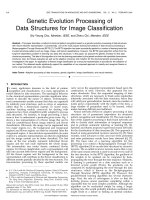
![understanding adobe photoshop cs6 [electronic resource] the essential techniques for imaging professionals](https://media.store123doc.com/images/document/14/y/ld/medium_ldp1401378034.jpg)